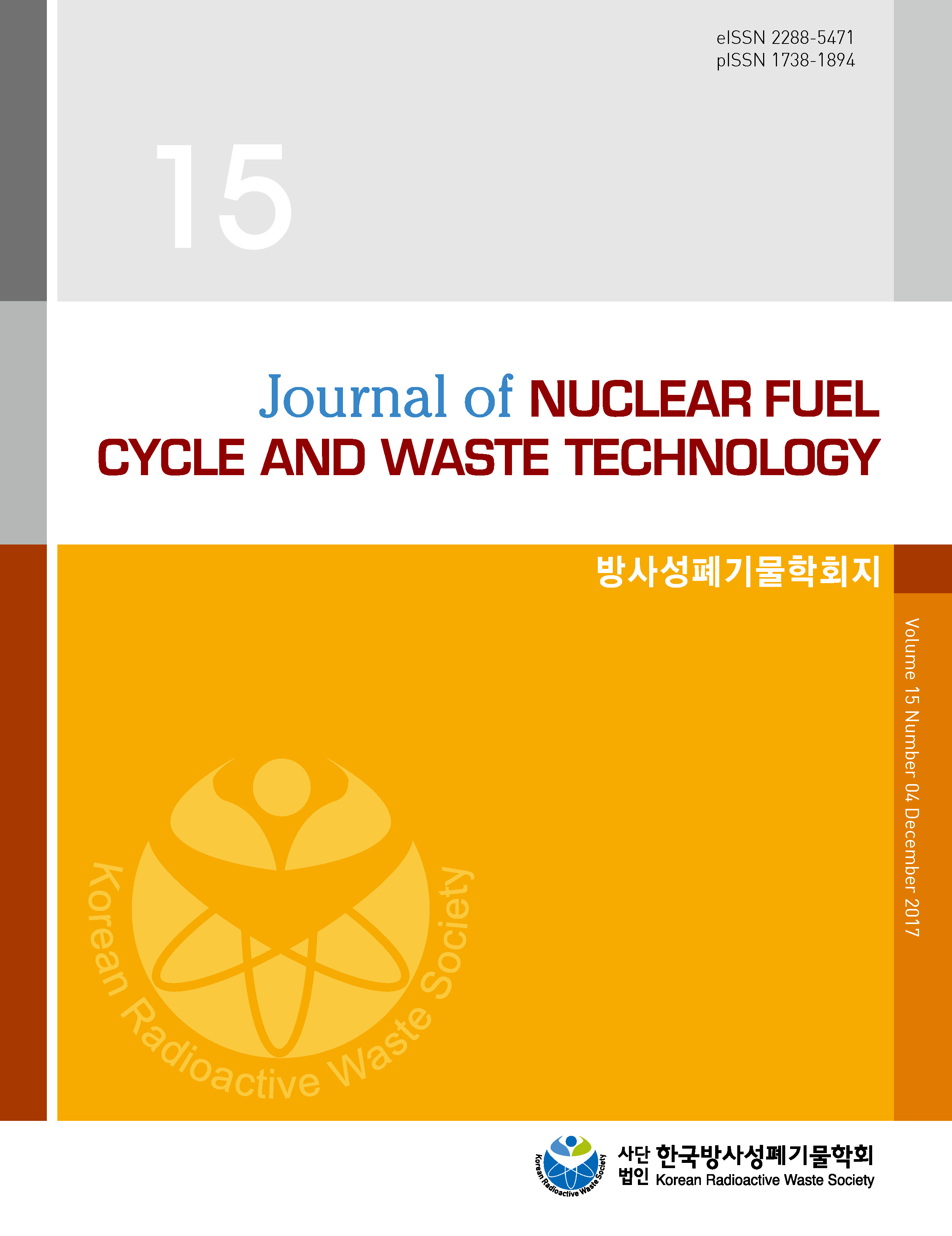학술논문
Deep Borehole Disposal of Nuclear Wastes: Opportunities and Challenges
이용수 0
- 영문명
- 발행기관
- 한국방사성폐기물학회
- 저자명
- Franklin W. Schwartz 김용제 채병곤
- 간행물 정보
- 『Journal of Nuclear Fuel Cycle and Waste Technology (JNFCWT)』Vol.15 No.4, 301~312쪽, 전체 12쪽
- 주제분류
- 공학 > 공학일반
- 파일형태
- 발행일자
- 2017.12.31

국문 초록
The concept of deep borehole disposal (DBD) for high-level nuclear wastes has been around for about 40 years. Now, the Department of Energy (DOE) in the United States (U.S.) is re-examining this concept through recent studies at Sandia National Laboratory and a field test. With DBD, nuclear waste will be emplaced in boreholes at depths of 3 to 5 km in crystalline basement rocks. Thinking is that these settings will provide nearly intact rock and fluid density stratification, which together should act as a robust geologic barrier, requiring only minimal performance from the engineered components.
The Nuclear Waste Technical Review Board (NWTRB) has raised concerns that the deep subsurface is more complicated, leading to science, engineering, and safety issues. However, given time and resources, DBD will evolve substantially in the ability to drill deep holes and make measurements there. A leap forward in technology for drilling could lead to other exciting geological applications. Possible innovations might include deep robotic mining, deep energy production, or crustal sequestration of CO2, and new ideas for nuclear waste disposal. Novel technologies could be explored by Korean geologists through simple proof-of-concept experiments and technology demonstrations.
영문 초록
목차
해당간행물 수록 논문
참고문헌
최근 이용한 논문
교보eBook 첫 방문을 환영 합니다!

신규가입 혜택 지급이 완료 되었습니다.
바로 사용 가능한 교보e캐시 1,000원 (유효기간 7일)
지금 바로 교보eBook의 다양한 콘텐츠를 이용해 보세요!


